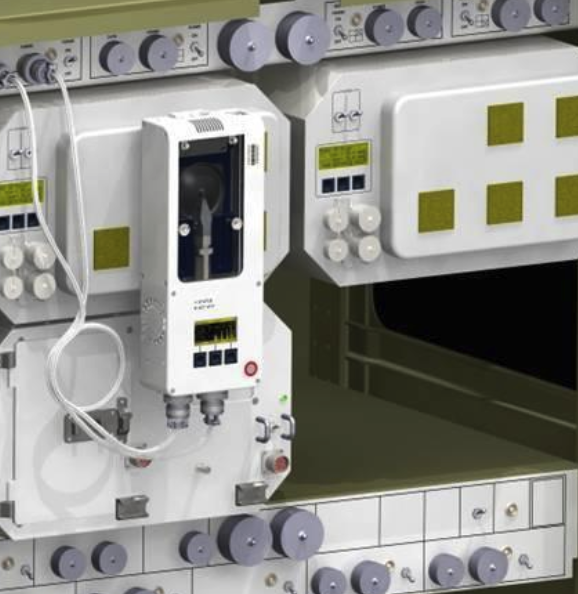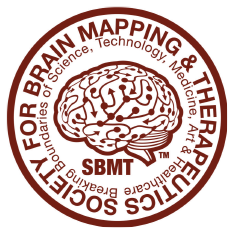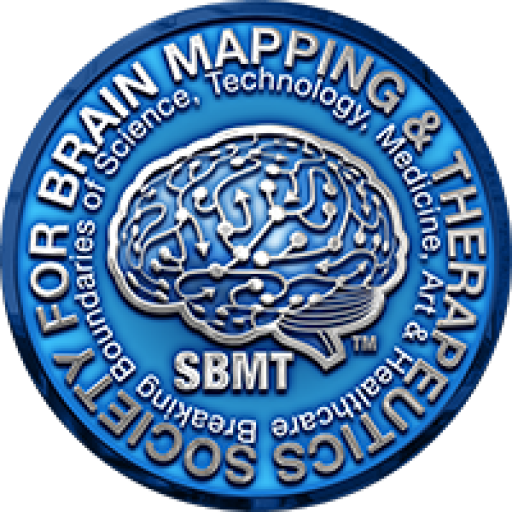
The JPL Electronic Nose (ENose) is a full-time, continuously operating event monitor designed to detect air contamination from spills and leaks in the crew habitat in the International Space Station. It fills the long-standing gap between onboard alarms and complex analytical instruments. ENose provides rapid, early identification and quantification of atmospheric changes caused by chemical species to which it has been trained. ENose can also be used to monitor cleanup processes after a leak or a spill.
Experiment Description
RESEARCH OVERVIEW
- Many air quality problems are known to have occurred on numerous International Space Station (ISS), MIR and Space Shuttle flights. In most of these events, the problem chemical(s) were either never identified or were identified only after the crew had been exposed to it. These represent health and safety risks to the crewmembers.
- No instrument currently exists on board the ISS to detect and quantify chemical leaks or spills in real time; ENose is designed to help reduce risks associated with crewmember exposure to toxic or dangerous chemicals.
- The JPL ENose atmospheric event monitor can provide rapid, early identification and quantification of target chemicals. Target chemical species for the ISS technology demonstration include leaks or spills of selected compounds such as organic solvents, freon, mercury, sulfur dioxide, and possibly marker chemicals which signal the beginnings of electrical fires. The JPL ENose can be also used to monitor cleanup processes after a spill or leak has occurred.
DESCRIPTION
The JPL Electronic Nose (ENose) is an array-based sensing system which contains 32 conductometric sensors. The Second Generation ENose was trained to detect, identify and quantify 21 chemical species, the majority of which are organic solvents or commonly used organic compounds, which might be released through a leak or a spill in a spacecraft crew cabin. It was extensively ground-tested, and includes data analysis software which will identify and quantify the release of a target chemical within 40 minutes of detection.
Past ENose investigations have focused on organic compounds such as common solvents and a few selected inorganic compounds, ammonia, water and hydrazine. For the new ENose to be performed on the ISS, two inorganic species have now been added to the analyte set, mercury and sulfur dioxide. To accommodate these inorganic species, the sensor array will incorporate a hybrid sensor approach, including both new sensing materials and new sensing platforms made up of microhotplate sensor substrates. Materials approaches to these analytes have been determined using models of sensor-analyte response developed under this program. Predictive models will also be used to complement array training for additional software analyses including chemical family identification and identification of unknown analytes. Analysis of data taken by the sensor array will be included on the ENose control computer, and event analysis will be available within 40 minutes of event onset.
The ENose event monitor, by identifying and quantifying trained-for chemical species, fills the gap between an alarm (which provides no ID or quantification) and high-end analytical instruments. ENose has demonstrated a wide dynamic range, ranging from fractional ppm to 10,000 ppm. Its array based sensing mechanism means that it can be trained to detect new chemical species, and training data can be uplinked to add new species to its on-board data library. ENose runs continuously (30 to 360 data points/hr) and autonomously; it requires only minimal crew interaction and requires no consumables. The ENose is low mass (less than 4 kg), small volume (less than 4 liters) and low power (less than 20 W), in addition to being microgravity-insensitive, robust, and rugged. It is capable of analyzing volatile aerosols as well as vapors.
Future applications of the JPL ENose may also include environments other than the spacecraft crew cabin and similar enclosed environments. Such applications may include integration with larger devices such as analytical instruments, and with environmental monitoring and control systems.
Applications
SPACE APPLICATIONS
The JPL ENose is envisioned to be one part of a distributed system for automated monitoring and control of the breathing atmosphere in inhabited spacecraft in microgravity. It is designed as an event or incident monitor, capable of providing rapid, early identification and quantification of changes in the atmosphere caused by leaks or spills of compounds to which the device has been trained. The flexibility of the device includes the ability to be trained to new compounds, the possibility of providing sensor sets for particular analyte suites, and a wide dynamic range (fractional ppm to 10,000 ppm), making it a valuable part of an air quality monitoring and control system that is comprised of several types of instruments. Such a system can be included in an environmental control system which actuates remediation of anomalous events.
EARTH APPLICATIONS
Many important and diverse Earth-based applications exist for ENose technology. One major driver is the current need for advanced detection devices for security (both civilian and military) and health safety applications, such as the detection of explosives and infection monitoring.
Operations
OPERATIONAL REQUIREMENTS AND PROTOCOLS
Upon arrival on board ISS, ENose will be unpacked from stowage and set up by a crewmember. ENose will be affixed to an EXPRESS Rack for power. ENose will run continuously for minimum of six months; data will be transferred to ground in Health and Status packets and in periodic file transfer. Data will also be archived in ENose until file transfer (up to 30 days). The crewmembers will perform periodic confirmational events to collect air samples in vicinity of ENose for analysis on ground.
ISS crewmembers will retrieve the ENose from stowage and install it on an EXPRESS Rack with a bracket assembly and/or Velcro; connect the power cable and the data cable. ENose will be powered on and the crewmember will verify the following: LED illumination; display operation; clear air inlet and outlets. ENose is autonomous with possible occasional crew commanding and periodic status checks (once or twice per month). Crewmembers will have periodic attended events if ENose detects a potential spill or leak. When ENose is relocated, the crewmember will need to reset the IP address.
RESULTS PUBLICATIONS
- Shevade AV, Ryan MA, Homer ML, Kisor AK, Lara LM, Zhou H, Manatt KS, Gluck SE, Goddard, III WA, Blanco M. Characterization of Unknown Events Observed by the Third Generation JPL Electronic Nose Using Sensor Response Models. 40th International Conference on Environmental Systems, Barcelona, Spain. 2010 Jul 11-15; AIAA 2010-6122DOI: 10.2514/6.2010-6122. | Impact Statement
- Ryan MA, Manatt KS, Gluck SE, Shevade AV, Kisor AK, Zhou H, Lara LM, Homer ML. The JPL Electronic Nose: Monitoring Air in the U.S. Lab on the International Space Station. 2010 IEEE Sensors, Kona, HI. 2010 Nov 1-4; 1242-1247. DOI: 10.1109/ICSENS.2010.5690607. | Impact Statement
- Reidt U, Helwig A, Muller G, Plobner L, Lugmayr V, Kharin S, Smirnov Y, Novikova ND, Lenic J, Fetter V, Hummel T. Detection of microorganisms onboard the International Space Station using an electronic nose. Gravitational and Space Research. 2017 December 31; 5(2): 89-111. DOI: 10.2478/gsr-2017-0013. | Impact Statement
- Ryan MA, Manatt KS, Gluck SE, Shevade AV, Kisor AK, Zhou H, Lara LM, Homer ML. Operation of Third Generation JPL Electronic Nose on the International Space Station. SAE International Journal of Aerospace. 2009 July 12; 2009-01-2522DOI: 10.4271/2009-01-2522. | Impact Statement
Copy citations
FLIGHT PREPARATION RESULTS PUBLICATIONS
- Kateb B, Ryan MA, Homer ML, Lara LM, Yin Y, Higa K, Chen MY. Sniffing out cancer using the JPL electronic nose: A pilot study of a novel approach to detection and differentiation of brain cancer. NeuroImage. 2009 47(Supp 2): T5-T9. DOI: 10.1016/j.neuroimage.2009.04.015.
- Jan DL. Environmental monitoring instruments: Using ISS as a testbed for exploration. 2007 IEEE Aerospace Conference, Big Sky, MT. 2007 March 3-10; 7 pp. DOI: 10.1109/AERO.2007.352722. | Impact Statement
- Shevade AV, Ryan MA, Homer ML, Kisor AK, Manatt KS, Lara LM. Monitoring Pre-Combustion Event Markers by Heating Electrical Wires. SAE International Journal of Aerospace. 2009 July 12; 2009-01-2543DOI: 10.4271/2009-01-2543. | Impact Statement
- Shevade AV, Homer ML, Zhou H, Jewell AD, Kisor AK, Manatt KS, Torres J, Soler J, Yen SS, Ryan MA, Blanco M, Goddard, III WA. Development of the third generation JPL Electronic Nose for International Space Station technology demonstration. SAE Technical Paper. 2007 July 9; 2007-01-31498 pp. DOI: 10.4271/2007-01-3149. | Impact Statement
- Ryan MA, Shevade AV, Kisor AK, Manatt KS, Homer ML, Lara LM, Zhou H. Ground validation of the third generation JPL Electronic Nose. SAE Technical Paper. 2008 June 29; 2008-01-2044193-200. DOI: 10.4271/2008-01-2044. | Impact Statement
- Ryan MA, Shevade AV, Taylor CJ, Homer ML, Jewell AD, Kisor AK, Manatt KS, Yen SS, Blanco M, Goddard, III WA. Expanding the capabilities of the JPL electronic nose for an International Space Station technology demonstration. SAE Technical Paper. 2006 July 17; 2006-01-21794 pp. DOI: 10.4271/2006-01-2179.





